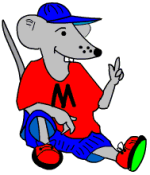 The language of probability develops further in year 6 to include:
The language of probability develops further in year 6 to include:
perhaps, might, fair, unfair, biased, random, likely, unlikely, equally likely, chance, certain, uncertain, probable, possible, impossible, good chance, poor chance, no chance, equal chance, even chance, evens, fifty-fifty chance, likelihood, probability, possibility, and, or, not.
Children should understand the probability scale from 0 to 1 and be able to put events in the appropriate place on the probability scale according to the likelihood of the event happening. A probability of 0 means that something is impossible. A probability of 1 means that something is certain to happen. Sometimes children think that some events have a probability of 0 or 1 when in fact they are quite near these values, but not actually 0 or 1. For example it is highly unlikely that we shall have built a bridge across the Atlantic Ocean by the year 2030, but this is not actually impossible, therefore the probability of it happening is extremely small, but not equal to zero. Likewise, the probability of the Sun rising as usual every morning for the next year is very high but not actually 1 as there is a very small chance of some cataclysmic event happening in the Solar System.
Two maths worksheets below look at the probability line from 0 to 1.
6701-01 Probability (pg 1)
6701-02 Probability (pg 2)
 Here we have some practice at filling in number lines using two digit numbers. Some of the numbers have already been written in. Notice that the number line has the lowest number at the bottom – and the numbers are completed in ascending order. It is interesting to watch how children do this; most will fill in from a number already there and prefer to count up rather than count down.
Here we have some practice at filling in number lines using two digit numbers. Some of the numbers have already been written in. Notice that the number line has the lowest number at the bottom – and the numbers are completed in ascending order. It is interesting to watch how children do this; most will fill in from a number already there and prefer to count up rather than count down.


